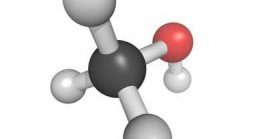September 1, 2020
As maritime stakeholders assess future fuel options in support of the International Maritime Organization's greenhouse gas reduction targets for 2030 and 2050, Lloyd's Register (LR) and the Methanol Institute (MI) have drawn up a technical reference on methanol for fueling, which is one of the future fuels receiving the most attention.
The new guide outlines the procedures necessary for the safe sourcing of methanol and incorporates specific checklists to assist shipowners, operators, ports, fuel suppliers and other interested parties in safe storage and handling.
Methanol is already used as a marine fuel in several types of ships. Compared to traditional heavy fuel oil options, its sulfur-free characteristics and lower greenhouse gas (GHG) emissions than conventional fuel can help owners meet IMO emissions regulations by 2020.

Being a low flash point fuel and a contact hazardous product, the partners identified the need for a technical reference that draws on the experience of industry players who use methanol successfully in their ships to deliver the clear and concise best practices for fueling. Methanol, which has been safely handled as a chemical for decades, has recently been used as a fuel and requires detailed knowledge of onshore and barge delivery options, as well as onboard tank setup.
"Methanol is increasingly considered one of the candidate fuels to be used in the decarbonization of maritime transport. It is already used as a marine fuel in tankers, cargo ships, ferries and port vessels. Its lower pollution and emissions profile greenhouse gases offers shipowners the opportunity to comply with IMO 2020 regulations and move towards compliance with IMO 2030, while gaining valuable knowledge towards the objectives of IMO 2050."
Chris Chatterton, Chief Operating Officer (COO) of the Methanol Institute (MI)
“The maritime industry is sizing up many decarbonization options in its journey from low carbon to net zero. Methanol is among these and it offers a pathway that will enable owners to progressively lower their emissions' profile while using conventional engine systems and technology to achieve net zero. This Technical Reference will support the industry with clear and useful advice around best practices. "
Douglas Raitt, Regional Advisory Services Manager, Lloyd's Register
Today, methanol is typically produced by steam reforming natural gas, but being the simplest of alcohols, it can also be made from various forms of biomass or waste materials, or even from the atmosphere itself, using CO2 from non-fossil energy sources alongside renewable hydrogen, furthering its environmental pedigree.
One of the main attractions of methanol as a type of fuel is that it has a single molecular structure, regardless of the production route - unlike, for example, natural gas or liquid distillate derived from petroleum and residual fuels, which represent each of them blends a range of different types of hydrocarbons, so the engines can be better tuned, as "fuel flexibility" is only required for methanol and a pilot fuel such as MGO.
The International Organization for Standardization is developing a methanol marine fuel grade specification and the regulatory process is moving towards the final adoption of new standards for the inclusion of low-flashpoint fuels in the IMO IGF Code.
Source: maritimepropulsion.com

